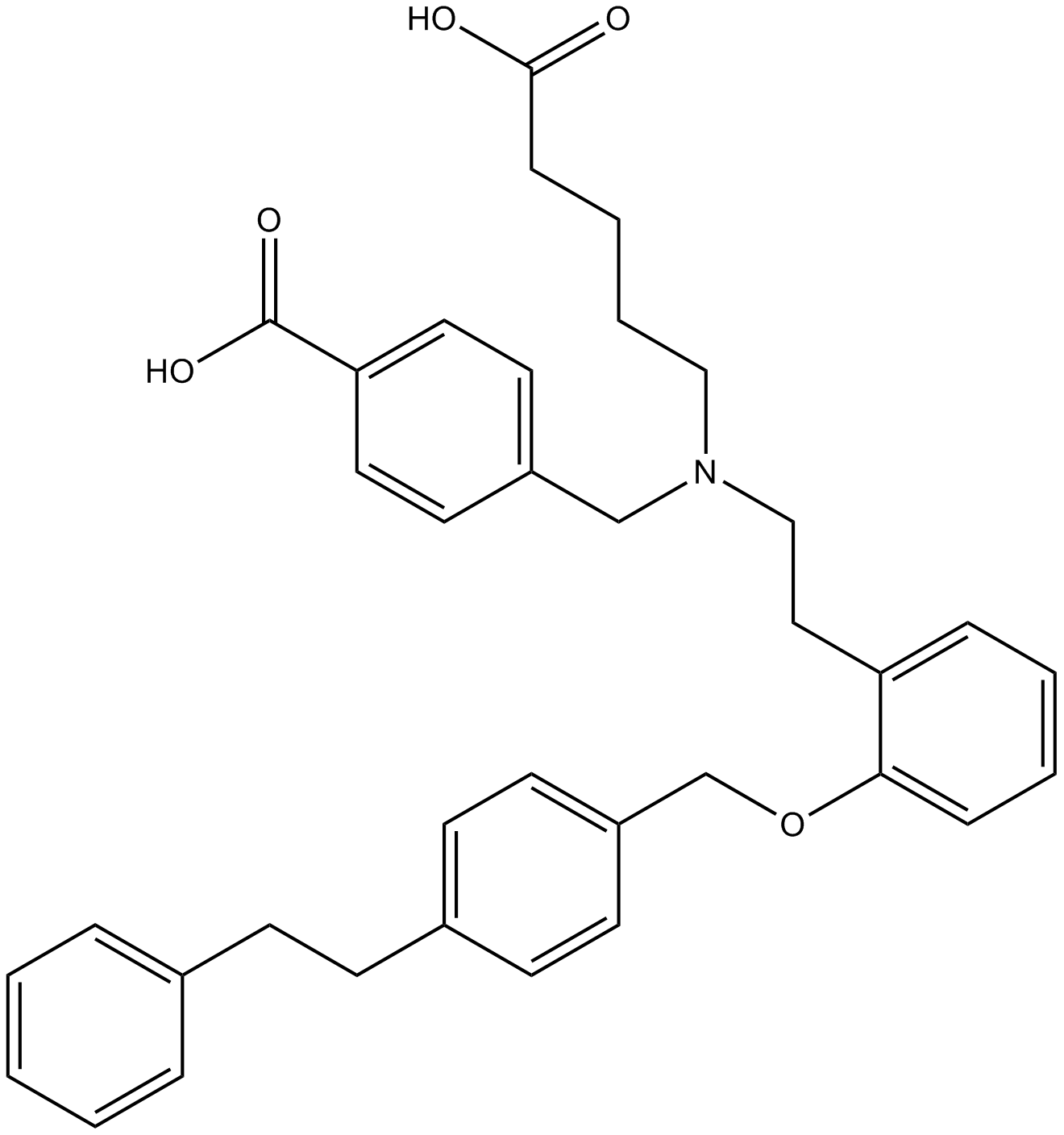Cinaciguat (Synonyms: BAY 58-2667) |
| Catalog No.GC10962 |
An activator of sGC
Products are for research use only. Not for human use. We do not sell to patients.

Cas No.: 329773-35-5
Sample solution is provided at 25 µL, 10mM.
Cinaciguat, also known as BAY-58-2667, is a NO-independent activator for sGC with EC50 of ∼10 nM for heme-free/oxidized sGC. [1]
Heme-related dysfunction can lead to cardiovascular diseases with the oxidation of the heme of soluble guanylate cyclase (sGC) critically implicated in some of these cardiovascular diseases. sGC, the main nitric oxide receptor, stimulates second messenger cGMP production, however reactive oxygen species are known to scavenge NO and oxidize/inactivate the heme leading to sGC degradation. Cinaciguat binding causes a rotation of the α- helix away from the heme pocket, as this helix is normally held in place via the inhibitory His105–heme covalent bond. [2]
Cinaciguat activates sGC with EC 50 and Kd values in the low nanomolar range. This renders the compound the most potent NO-independent sGC activator reported to date. Furthermore, cinaciguat produces an additive, non-synergistic effect when combined with NO donors. Cinaciguat could also relaxe blood vessels with a high potency which is several orders of magnitude greater than the NO-donors sodium nitroprusside (SNP) and 3-morpho-linosydnonimin. In addition, the compound reduces coronary perfusion pressure in the rat Langendorff heart preparation and remains active in tissues made tolerant to glyceryl trinitrate. [1]
Cinaciguat could protect cardiomyocytes against ischemia/reperfusion injuries. Cinaciguat caused 63 and 41% reduction of infarct size when given before I/R and at reperfusion in rabbits, respectively. In addition, cinaciguat pretreatment caused a more robust 80% reductionin infarct size vs. 63% reduction when given at reperfusion and preserved cardiac function following I/R in mice, through cGMP-PKG-dependent generation of H2S in the heart and cardiomyocytes.[3]
References:
[1] Evgenov, Oleg V., et al. "NO-independent stimulators and activators of soluble guanylate cyclase: discovery and therapeutic potential." Nature reviews Drug discovery 5.9 (2006): 755-768.
[2] Martin, Faye, et al. "Structure of cinaciguat (BAY 58–2667) bound to Nostoc H-NOX domain reveals insights into heme-mimetic activation of the soluble guanylyl cyclase." Journal of Biological Chemistry 285.29 (2010): 22651-22657.
[3] Salloum, Fadi N., et al. "Cinaciguat, a novel activator of soluble guanylate cyclase, protects against ischemia/reperfusion injury: role of hydrogen sulfide."American Journal of Physiology-Heart and Circulatory Physiology 302.6 (2012): H1347-H1354.
Average Rating: 5 (Based on Reviews and 30 reference(s) in Google Scholar.)
GLPBIO products are for RESEARCH USE ONLY. Please make sure your review or question is research based.
Required fields are marked with *




















